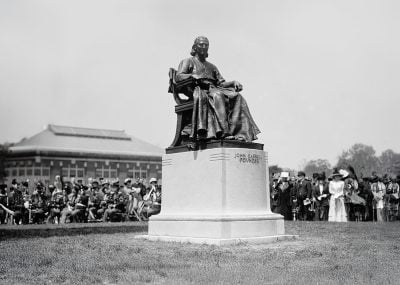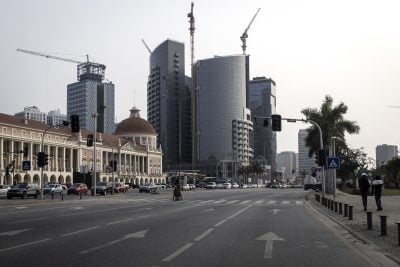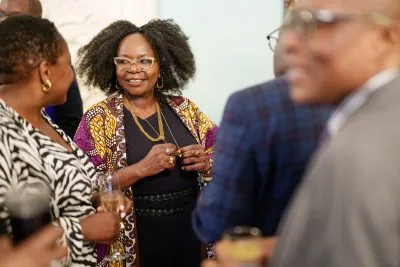Your first contact with Singapore is most likely to be Changi International Airport. If you are a frequent traveller and have often been subjected to the trials and tribulations of negotiating your way around the world’s airports, you quickly realise why Changi has won more ‘best airport’ awards than anyone else over the years. But of course, what you don’t see is the engineering that makes Changi and many of the country’s magnificent structures work so effectively.
Delivering this high quality engineering is the responsibility of the Meinhardt engineering consultancy. “We carried out the upgrade of terminal one at Changi without disrupting any of the airport’s business,” says Omar Shahzad – who at 35 is the surprisingly young CEO of the group.
Meinhardt is one of the world’s few multi-disciplinary and truly integrated engineering, infrastructure and project management consulting firms.
Singapore’s glittering cityscape owes a great deal to the expertise of Meinhardt engineers. For example, the Marina Bay Financial Centre, an elegant cluster of glass and steel high-rises which dominates the city centre, and the superb ‘Gardens By the Bay’ are both Meinhardt projects. Another Meinhardt project is the thrilling and awe-inspiring Resort World, including Universal Studios, at Santosa.
In fact, travel the world and the chances are that the most imposing structures you are likely to come across will be Meinhardt projects:
The Dubai Mall, the World Trade Centre 2 in Indonesia, the KL Central Station in Malaysia, the Greater Bangalore Water Supply Distribution Network in India, the Azia Centre in Shanghai, BHP Global headquarters in Melbourne, 151 City Road Hotel in London and literally hundreds of other outstanding projects around the world.
The total number of completed projects Meinhardt has been involved is well over 100,000.
‘With our Australian heritage, our presence in Singapore provided us with easy access to both the East and West and this has helped us to gain a very competitive foothold in Asia Pacific’
With annual contracts worth around $15bn, Meinhardt is ranked among the world’s largest independent engineering consulting firms. It has over 3,700 consultants working in 39 offices worldwide, including in Australia, Greater China, India, Pakistan, Singapore, Malaysia, Indonesia, Thailand, Vietnam, the Philippines, Middle East and North Africa and the United Kingdom.
The engineering consultancy was started by Bill Meinhardt in Melbourne in 1955. “He could foresee that the real growth in construction would come from emerging Asia,” Shahzad told me.
Through a joint venture with Bylander Waddell from the UK, Meinhardt’s first overseas office was established in Singapore in 1973. “With our Australian heritage, our presence in Singapore provided us with easy access to both the East and West and this has helped us to gain a very competitive foothold in Asia Pacific,” said Shahzad.
The firm provides what Shahzad calls “end-to-end consultancy”. This includes feasibility studies, master planning, detailed design, construction supervision, testing, commissioning and project management to delivery.
“The same team stays involved throughout the project. Basically, we are a one-stop shop in terms of engineering. We provide a single point of contact – we take the lead, and if things go wrong, we take the blame,” he says.
Avoiding costly mistakes
Meinhardt has become increasingly involved in some of the biggest projects in the Middle East and is now looking towards Africa. “If you examine the global trends, Africa is next in line for mega projects that require world-class engineering. African economies are growing rapidly, their cities are expanding and the continent is becoming more integrated into the rest of the world. This calls for efficiencies and best practice all around. What is more, Africa can avoid many of the costly mistakes that other emerging markets have made.”
These, he says, have been caused by taking piecemeal approaches to projects. “Someone provides the architectural designs, someone else the engineering, yet someone else supervises the construction and so on. You end up with pieces of a jigsaw that don’t fit together.”Take design, for instance, he says. “Design may be the smallest component in a project but it is critical. Good, well-thought-out design could save as much as 15% of construction cost. Engineers can work out the optimal use of steel and glass for example, how to position components so that there is less need for reinforcement.”
He believes that Africa, like some emerging markets,
have not yet fully grasped the importance of good design and the need to integrate it with engineering so that the whole process is seamless. “What you need is a good team that will take the project from start to finish,” he says.
A good project team, for example, he says “should understand the requirements of the client, the sort of project they want, their budget, how quickly the project needs to be completed and the lifespan of the project”.
The role of the project team, he says, “is key from the feasibility study right through to the concept and detailed design, preparation and calling for tenders, making sure the right type of contractors tender for the job, giving the right advice to the client and recommending the most suitable contractor to take on the job based on the client’s objectives”.
There is no doubt that Africa has more than its fair share of shoddy construction. Cities are full of structures that are ugly, often dark and dank, unhealthy, poorly planned, inefficient and given to crumbling and disintegrating at the slightest encouragement. These are often ‘off the shelf’ designs that take no account of local environments or the use to which the structure will be put. They are often hastily and cheaply put together and look attractive from the outside. But in no time, the cosmetic veneer fades away and we are left with expensive mistakes.
“When we look at a project in a developing country, where the quality of construction may not be the same as in Singapore, we tend to have a higher involvement because we need to be more hands on,” says Omar Shahzad.
Something tells me Meinhardt will be kept quite busy in Africa for a while to come.
Want to continue reading? Subscribe today.
You've read all your free articles for this month! Subscribe now to enjoy full access to our content.
Digital Monthly
£8.00 / month
Receive full unlimited access to our articles, opinions, podcasts and more.
Digital Yearly
£70.00 / year
Our best value offer - save £26 and gain access to all of our digital content for an entire year!
 Sign in with Google
Sign in with Google 


